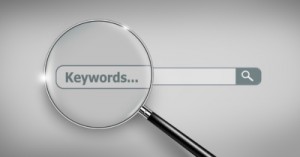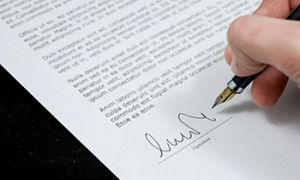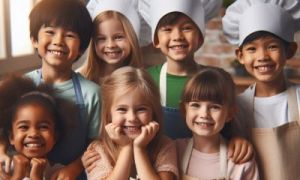The EYLF Outcomes Meanings and Examples provide detailed meanings for each of the 5 learning outcomes as well as examples of how each learning outcome can be implemented into practice.
EYLF Outcome 1
Children Need to feel welcome
- Say hello to the children when they first arrive in the morning
Children need to be encouraged to tell you their ideas
- Tell me about your drawing
Sit with the children while they play. Talk with the children about what they are doing
- Here you go, let’s build this big wall
Children and families need to know who is looking after them
- Make a poster with photos and names of the staff
Children need to know when things will happen during their day
- Make a poster with all the routines
Children need to feel safe
- Check the building, toys and playground for dangerous things
Children begin to learn about sharing and helping others
- Make sure you have a few of the same toys. This will make it easier to teach children to share
Children begin to show respect
- Talk to the children about how it might make them feel if you take a toy off them while they are still playing with it
Children begin to learn about controlling their temper
- When children get angry talk to them about what is making them angry. Talk to them about sharing if that is what they are angry about
Children begin to understand and respect who they are
- Put up photos of the children in your centre or preschool. Have the Aboriginal or Torres Strait Islander flag up with their photos
Children are proud of their culture and share it with other children and adults
- Invite family members or community Elders to come along and share their culture with the children singing and dancing
Children like to celebrate and share what they have done with others
- Children can get excited about sharing something with you. Go and see what it is. Celebrate their excitement
Children like to use their first language to help make meaning of their world
- Encourage children to talk in the language they speak at home while they are playing
Children like to play with other children and be part of a group
- The children play nicely together and help each other
Children like to use their ideas while they are playing with others
- Let's pretend we are looking for long shells, mud mussels and crabs
Children learn to relate to other children’s feelings
- Children ask the other children ‘Why are you crying/angry or happy?’
EYLF Outcome 2
Children have rights in their community
- Put up a poster that shows that all children have the right to be safe, to be cared for and to get a good education
Children learn about the roles and relationships
- The children learn about who the teachers and the staff are and build trusting relationships with them
Children learn to tell someone when they don’t like what is happening
- Watch out for children who might be upset. Maybe they need to tell you that someone has taken something from them that they were playing with
Children learn to play in groups
- Set the inside and outside play area up to include blocks and a sandpit. This will encourage children to play in groups
Children learn that other children have feelings and need too
- Talk to the children about feelings like happiness, sad and anger. Help them to understand that everyone has these feelings. Sing songs about feelings
Children learn about rules and responsibilities
- Talk with the children about making rules for the centre or preschool. Put these rules up for everyone to see
Children learn to show respect for others
- Help the children to listen to each other when they are talking.
Children learn about the importance of their culture
- You can talk about your culture and compare the same and differences with another culture of a family attending the centre.
Children learn about same and differences with their friends
- You could keep a chart of all the children in the centre and identify on the chart how many people have brothers, sisters and family pets who live in their house.
Children learn about fairness with others
- Talk to the children about taking turns and sharing
Children learn about unfairness with others
- Ask them how they would feel if they didn’t get a turn on the swing. Would that be fair?
Children learn to make choices
- Ask the children what they want to do – paint or play in the sandpit or read a book or do something else
Children learn about ideas through play
- Tell stories to the children about the importance of caring for their country.
Children work together while playing
- Talk to the children about working together to care for the environment – the land and animals.
Children learn to care for their environment
- Talk to the children about looking after the outdoor space. Ask the children to help water the trees in the playground. We need to pick up the rubbish inside and put the toys away.
EYLF Outcome 3
Children learn to trust others
- Make sure you come to work every day because the children trust that you will be there for them
Children are comforted by others when upset
- When children are crying give them a hug straight away. Don’t make them wait
Children get better at working with others while playing
- Children need to play for a long time. But you need to stay close to help them play and learn
Children tell you when they are hungry thirsty or tired
- Look for the signs from the children that show they are hungry, tired or thirsty
Children are happy, healthy and safe
- Give the children good food and drink. Let them sleep when they are tired. When children tell you what they need
Children have games and activities for using their hands and body
- Children have balls, bikes, building toys, drawing and painting activities
Children learn about healthy food
- Talk to the children at meal times about healthy food and what is unhealthy food
Children learn about the importance of washing their hands and using the toilet
- Use words to support and praise children when they wash their hands after going to the toilet,
Children learn about safety while playing
- Work with and teach the children to look after each other and play safely
EYLF Outcome 4
Children show an interest in what you give them to play with
- Set up activities in interesting and exciting ways. Like shells in the sand pits, feathers for painting
Children are happy when they are playing
- Set up activities that interest the children. You need to watch for what they are interested in and use these ideas when planning
Children are learning while they play
- When they are playing in the sandpit with the buckets you could talk with the children about counting or heavy or empty or full
Children use their own ideas to make their play more interesting
- The children might ask you to get them some special toys for their play in the sandpit
Children keep trying even when they find things are hard for them to do
- Give children time to practise doing the puzzle or their block building so they can become good at the skill
Children have lots of choices of things to do when they play
- Give all the children lots of activities to play with both inside and outside
Children have time to think about new ideas
- Children need lots of time to think about what they are playing. Let them change their play if they want to
Children have activities that will help them with counting.
- Children need lots of maths activities. Like counting the seed pods, sorting the big fish from the little fish
Children have lots of time to play
- Give the children lots of time to play. Children need time when they first arrive.
Children have lots of time to play with the same toys and activities over and over again
- Children need enough time to play with the same things over and over again like a puzzle.
Children use ideas from home or somewhere new they have been in their play
- Let children bring their ideas from home or the community to childcare or preschool where they can practice them in their play.
Children begin to make connections with their community
- Talk to children about all the people in the community that can help them learn.
Children make connections with places
- Talk to the children about where they live, where they play, and where they go fishing.
Children use technology to explore ideas
- Teach the children how to use the camera to take photos of their block building or sandpit play or play dough activities.
EYLF Outcome 5
Children enjoy talking and listening to others
- Staff must stop and take time to listen to children and talk to them
Children use oral language to talk about things they see, hear, touch, feel, and taste
- Listen to children when they talk to you about their ideas.
Children use language to talk about their ideas
- Watch out for the signs that children use to show they understand something - like nodding their head or doing what you ask them to do
Children show enjoyment while listening to a story.
- Read stories about what the children are interested in.
Children have choices of story books to read
- Have lots of good storybooks for children from birth to preschool. Let them choose the book they want to look at
Children make the connection between oral language and written text or numbers
- Let the children see you writing words and numbers- like writing a child’s names
Children use language to talk about games and ideas and retell stories
- When children are in the sand pit ask them about what they are doing.
Children use artwork to retell stories
- When the children have finished drawing a picture ask them to tell you about what they have drawn.
Children use multimedia to retell stories
- Use music, pictures cards, puppets, photos and even objects gathered from the beach
Children identify signs and symbols in their community and use them in their play.
- Make picture signs (e.g. going to the airport) and use them in the children’s play.
Children have memory and sequence games to tell and retell stories.
- Take a set of photos of a child peeling a banana or getting dressed.
Children play games using repetition and rhyming to learn about patterns.
- When you pack up after activities, sing a song while you do this or while they are washing their hands before meals
Children use real or pretend telephones, cameras and computers as props in their play
- Use cardboard boxes to make a pretend computer. Or ask the council if they have a computer
Children use the internet to find information related to their interest
- If you have a computer and the Internet you can find good stories and pictures
Children use technology for drawing, designing, counting and writing
- Have good computer programs so children can practise drawing, counting and writing.
Further Reading
Free EYLF Version 2.0 Posters and Cheat Sheets - The following provides a list of cheat sheets and free printables based on EYLF Outcomes Version 2.0. These can be used as a reference point for Educators. They can also be used to refer to when documenting and planning.
EYLF Outcomes In Action Version 2.0 - EYLF Outcomes In Action provides examples of how each learning outcome can be demonstrated within the learning environment. These are great to display to show how children and Educators are actively engaging in each learning outcome.







 Here is the list of the EYLF Learning Outcomes that you can use as a guide or reference for your documentation and planning. The EYLF
Here is the list of the EYLF Learning Outcomes that you can use as a guide or reference for your documentation and planning. The EYLF The EYLF is a guide which consists of Principles, Practices and 5 main Learning Outcomes along with each of their sub outcomes, based on identity,
The EYLF is a guide which consists of Principles, Practices and 5 main Learning Outcomes along with each of their sub outcomes, based on identity, This is a guide on How to Write a Learning Story. It provides information on What Is A Learning Story, Writing A Learning Story, Sample
This is a guide on How to Write a Learning Story. It provides information on What Is A Learning Story, Writing A Learning Story, Sample One of the most important types of documentation methods that educators needs to be familiar with are “observations”. Observations are crucial for all early childhood
One of the most important types of documentation methods that educators needs to be familiar with are “observations”. Observations are crucial for all early childhood To support children achieve learning outcomes from the EYLF Framework, the following list gives educators examples of how to promote children's learning in each individual
To support children achieve learning outcomes from the EYLF Framework, the following list gives educators examples of how to promote children's learning in each individual Reflective practice is learning from everyday situations and issues and concerns that arise which form part of our daily routine while working in an early
Reflective practice is learning from everyday situations and issues and concerns that arise which form part of our daily routine while working in an early Within Australia, Programming and Planning is reflected and supported by the Early Years Learning Framework. Educators within early childhood settings, use the EYLF to guide
Within Australia, Programming and Planning is reflected and supported by the Early Years Learning Framework. Educators within early childhood settings, use the EYLF to guide When observing children, it's important that we use a range of different observation methods from running records, learning stories to photographs and work samples. Using
When observing children, it's important that we use a range of different observation methods from running records, learning stories to photographs and work samples. Using This is a guide for educators on what to observe under each sub learning outcome from the EYLF Framework, when a child is engaged in
This is a guide for educators on what to observe under each sub learning outcome from the EYLF Framework, when a child is engaged in The Early Years Learning Framework describes the curriculum as “all the interactions, experiences, activities, routines and events, planned and unplanned, that occur in an environment
The Early Years Learning Framework describes the curriculum as “all the interactions, experiences, activities, routines and events, planned and unplanned, that occur in an environment


